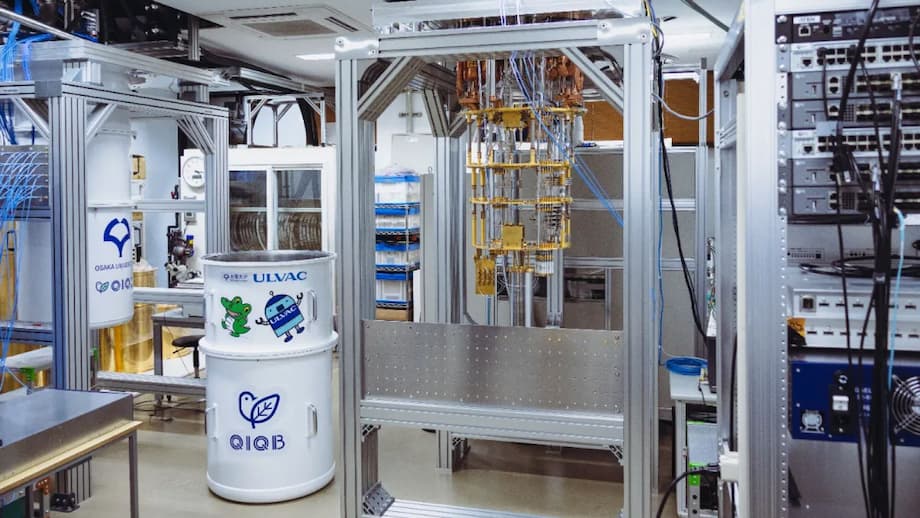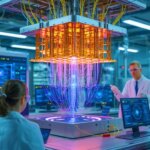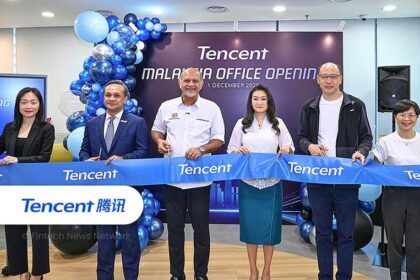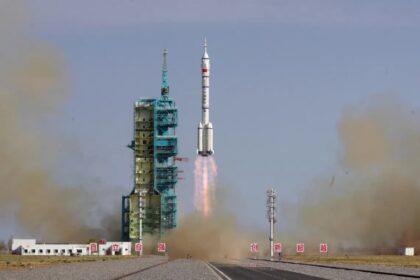Japan’s Quantum Computing Milestone: Full Technological Independence
Japan has achieved a historic breakthrough in advanced computing by launching its first quantum computer built entirely from domestically developed components and software. This landmark system, now operational at the University of Osaka’s Center for Quantum Information and Quantum Biology (QIQB), marks a pivotal moment in Japan’s technological journey—demonstrating not only scientific prowess but also a strategic move toward national self-reliance in one of the world’s most competitive technological arenas.
- Japan’s Quantum Computing Milestone: Full Technological Independence
- What Makes Japan’s Quantum Computer Unique?
- How Does Quantum Computing Work, and Why Is It Revolutionary?
- Japan’s Path to Quantum Self-Reliance: Who Made It Possible?
- Public Debut at Expo 2025: Bringing Quantum Computing to the Masses
- Global Implications: How Does Japan’s Quantum Leap Compare?
- Challenges Ahead: The Road to Practical Quantum Computing
- In Summary
The quantum computer, which went live on July 28, 2025, is the result of years of collaborative effort among leading Japanese research institutions, universities, and industry partners. By replacing all previously imported parts with homegrown technologies and running on open-source software developed in Japan, the project signals a new era of innovation and supply chain resilience for the country.
What Makes Japan’s Quantum Computer Unique?
Unlike earlier quantum computers in Japan that relied on foreign-made components or software, this new system is fully homegrown. Every critical element—from the quantum chip to the refrigeration systems—was designed, manufactured, and integrated within Japan. The quantum processing unit (QPU) at the heart of the system was developed by the renowned research institute RIKEN, while other essential components such as the chip package, magnetic shield, infrared and bandpass filters, low-noise amplifier, and specialized cables were all produced by Japanese companies.
These components are housed in a dilution refrigerator, a sophisticated cryogenic device that cools the quantum chip to temperatures near absolute zero (just a few millikelvin above -273.15°C). This extreme cold is necessary for the superconducting qubits—quantum bits made from metals that lose all electrical resistance at such low temperatures—to maintain their delicate quantum states. Supporting systems include a pulse tube refrigerator for initial cooling, advanced controllers, and a low-noise power source, all domestically engineered.
On the software side, the system runs on the Open Quantum Toolchain for Operators and Users (OQTOPUS), a suite of open-source tools developed entirely in Japan. OQTOPUS provides everything needed to program, operate, and monitor the quantum computer, including a core engine, cloud module, and graphical user interface. This open-source approach not only fosters collaboration and transparency but also ensures that Japan retains full control over its quantum computing ecosystem.
How Does Quantum Computing Work, and Why Is It Revolutionary?
Quantum computers operate on principles fundamentally different from those of classical computers. While traditional computers use bits that represent either a 0 or a 1, quantum computers use qubits, which can exist in multiple states simultaneously thanks to quantum phenomena such as superposition and entanglement. This allows quantum computers to process many calculations in parallel, offering the potential to solve problems that are currently intractable for even the world’s fastest supercomputers.
For example, quantum computers could revolutionize:
- Drug discovery: Simulating molecular interactions at the quantum level to accelerate the development of new medicines.
- Materials science: Designing new materials with tailored properties by modeling quantum interactions.
- Optimization: Improving logistics, traffic management, and supply chain operations by rapidly evaluating countless possible scenarios.
- Machine learning: Enhancing artificial intelligence by enabling faster and more complex data analysis.
However, building a practical quantum computer is extremely challenging. Qubits are highly sensitive to their environment, and even the slightest disturbance can cause errors in calculations. As the number of qubits increases, so does the difficulty of maintaining their quantum states and correcting errors. This is why much of the current research focuses on quantum error correction and improving the stability of quantum systems.
Japan’s Path to Quantum Self-Reliance: Who Made It Possible?
The Osaka quantum computer is the product of a broad alliance among academia, government, and industry. Key partners include RIKEN (which developed the quantum chip), ULVAC and ULVAC CRYOGENICS (cryogenic systems), e-trees.Japan, QuEL, QunaSys, Systems Engineering Consultants, TIS, and Fujitsu. This consortium ensured that every aspect of the project—from microfabrication and cryogenics to electronic control systems and software—was handled domestically.
Government support has been crucial. Funding from the Ministry of Education, the Japan Science and Technology Agency, and the Cabinet Office underscores the strategic importance of quantum technology for Japan’s scientific and economic future. The University of Osaka, a premier institution with a long history of innovation, served as the project’s hub, leveraging its expertise in quantum information science and engineering.
Technological and Strategic Significance
By achieving full technological independence in quantum computing, Japan has reduced its vulnerability to global supply chain disruptions and export restrictions. This self-reliance also allows for greater customization and optimization of quantum systems to meet national priorities, from scientific research to industrial applications and national security.
As Professor Akihiro Kubota of Tama Art University, who collaborated on the project’s public outreach, explained:
“This project is not just about building a computer. It’s about building an ecosystem of innovation, creativity, and collaboration that will drive Japan’s future in the quantum era.”
Public Debut at Expo 2025: Bringing Quantum Computing to the Masses
Japan’s homegrown quantum computer made its public debut at Expo 2025 in Osaka, held from August 14 to August 20. The exhibition, titled “entangle moment – [quantum, ocean, universe] x art,” was designed to demystify quantum technology and inspire the next generation of innovators.
Visitors to the expo could interact with the quantum computer through remote cloud access, running basic quantum programs and exploring quantum phenomena such as entanglement via interactive exhibits. The collaboration with Professor Kubota also brought a creative dimension to the event, showcasing art generated by the quantum computer itself—a vivid demonstration of how science and creativity can intersect in the quantum age.
The exhibit aimed to make quantum technology accessible to a broad audience, from students and educators to business leaders and policymakers. By blending hands-on demonstrations with artistic expression, the organizers hoped to spark curiosity and foster a deeper understanding of quantum computing’s potential impact on society.
Global Implications: How Does Japan’s Quantum Leap Compare?
Japan’s achievement comes at a time of intense global competition in quantum technology. The United States, China, and several European countries have made significant investments in quantum research, with companies like IBM, Google, and Alibaba racing to build ever more powerful quantum machines. Until now, most operational quantum computers in Japan and elsewhere relied on imported components or proprietary software from foreign vendors.
By building a fully domestic quantum computer, Japan has joined the ranks of nations capable of end-to-end quantum system development. This not only enhances national security and economic competitiveness but also positions Japan as a potential leader in the emerging global quantum ecosystem. The open-source nature of OQTOPUS further encourages international collaboration and knowledge sharing, potentially accelerating progress worldwide.
Expert Perspectives
Industry analysts and quantum researchers have hailed the Osaka project as a model for technological sovereignty. As noted by The Quantum Insider:
“Japan’s comprehensive mastery of the technologies required for quantum computer manufacturing and system integration demonstrates that national innovation ecosystems can propel cutting-edge research into real-world systems.”
Meanwhile, international observers see the project as a catalyst for broader adoption and understanding of quantum technology. As reported by GreekReporter.com:
“The goal was to raise the public’s understanding of the technology and highlight its potential role in shaping future industries.”
Challenges Ahead: The Road to Practical Quantum Computing
Despite the excitement, significant hurdles remain before quantum computers can fulfill their promise. The most pressing challenge is error correction. Qubits are notoriously fragile, and even minor disturbances can introduce errors that quickly cascade through calculations. Researchers are developing sophisticated algorithms and hardware solutions to detect and correct these errors, but practical, large-scale quantum computing is still a work in progress.
Another challenge is scaling up the number of qubits while maintaining their coherence and connectivity. Each additional qubit increases the system’s complexity exponentially, requiring advances in materials science, cryogenics, and control electronics. Japan’s integrated approach—combining expertise in all these areas—positions it well to tackle these obstacles, but continued investment and collaboration will be essential.
Finally, there is the question of workforce development. Quantum computing requires a new generation of scientists, engineers, and software developers with specialized skills. Initiatives like the Expo 2025 exhibit and open-source projects like OQTOPUS are crucial for building this talent pipeline and ensuring that Japan remains at the forefront of quantum innovation.
In Summary
- Japan has launched its first fully homegrown quantum computer, marking a major milestone in technological self-reliance.
- The system, based at the University of Osaka, uses only domestically developed hardware and open-source software (OQTOPUS).
- Quantum computers leverage qubits and quantum phenomena to solve problems beyond the reach of classical computers, with potential applications in medicine, logistics, and AI.
- The project involved a broad consortium of Japanese research institutes, universities, and companies, with strong government support.
- The quantum computer debuted at Expo 2025 in Osaka, featuring interactive exhibits and quantum-generated art to engage the public.
- Japan’s achievement enhances its global standing in quantum technology and sets a precedent for technological sovereignty and innovation.
- Significant challenges remain, especially in error correction and scaling, but Japan’s integrated approach positions it well for future breakthroughs.












